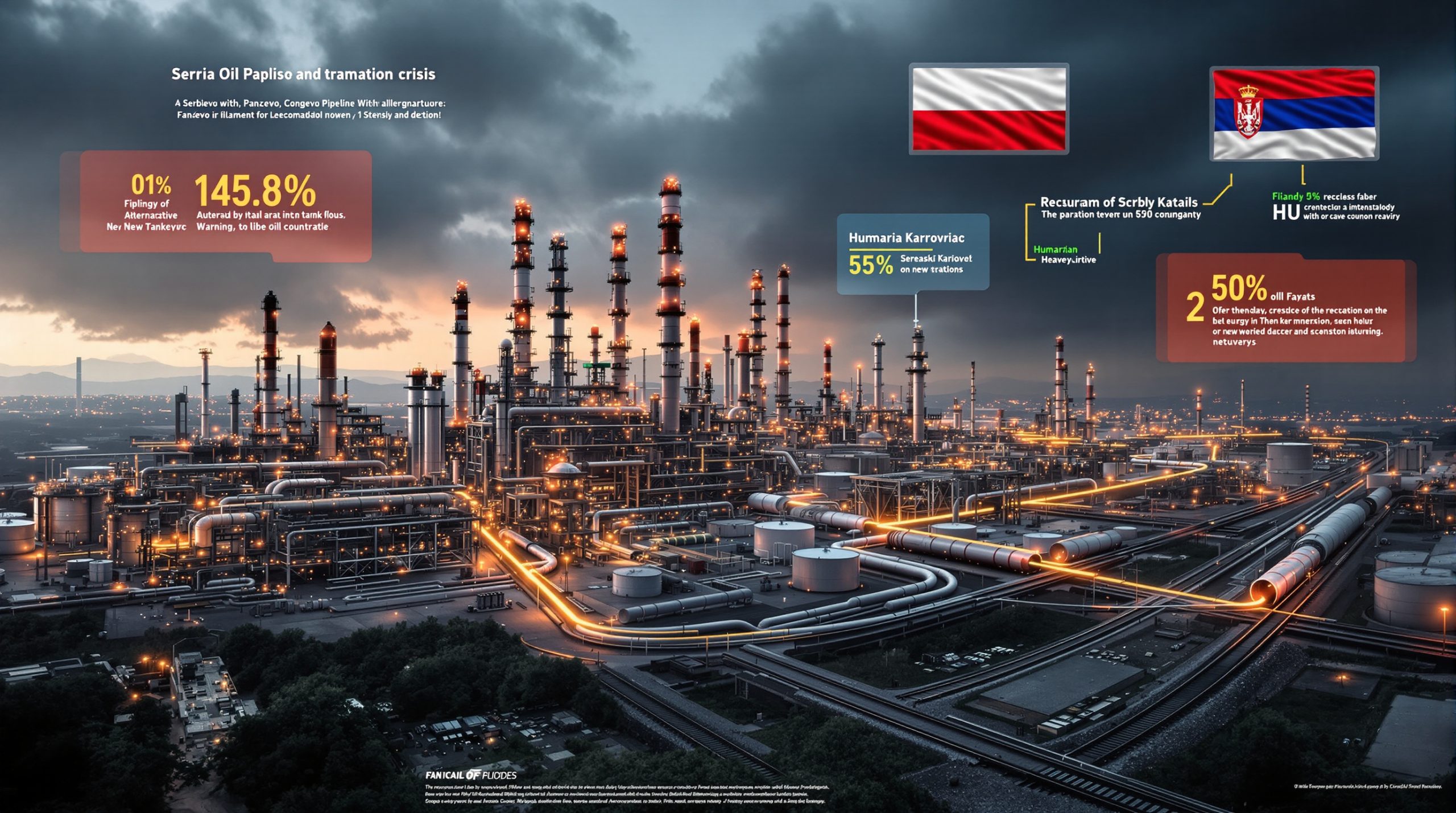UK Carbon Border Adjustment Mechanism: Implementation, Impact, and Industry Implications
The United Kingdom's Carbon Border Adjustment Mechanism (CBAM) represents a significant policy shift aimed at aligning trade practices with climate objectives. Published in draft form on April 24, 2025, and set for full implementation on January 1, 2027, the UK CBAM targets carbon-intensive imports to prevent "carbon leakage" and ensure parity between domestic industries subject to the UK Emissions Trading System (ETS) and international competitors. This comprehensive policy creates a framework to address competitive disadvantages faced by UK manufacturers while advancing broader decarbonization goals.
Understanding the UK Carbon Border Adjustment Mechanism
Definition and Core Purpose
The UK CBAM is a tax policy designed to prevent carbon leakage by applying carbon pricing to imported goods from countries with less stringent climate regulations. At its core, this mechanism ensures domestic producers who pay carbon costs under the UK ETS aren't disadvantaged against international competitors operating without similar constraints. The primary objective is creating a level playing field that maintains both industrial competitiveness and environmental integrity.
The implementation timeline is clearly defined: after publishing draft primary legislation on April 24, 2025, the government has scheduled full implementation for January 1, 2027. This gradual approach provides businesses with adaptation time while signaling the UK's commitment to using trade policy as a climate action tool.
Economic and Environmental Significance
The UK CBAM addresses a fundamental economic challenge: without border adjustments, carbon-intensive industries face incentives to relocate to regions with weaker climate policies, undermining domestic decarbonization efforts. This "carbon leakage" not only threatens local jobs but potentially increases global emissions by shifting production to less efficient facilities.
By 2025, the divergence between UK and EU carbon prices had become substantial, with UK ETS prices significantly trailing EU rates (£32.57/tCO₂e versus €71.52/tCO₂e in January 2025). This price gap created an economic disadvantage estimated to cost UK exporters approximately £800 million in EU CBAM payments between 2026 and 2030 if left unaddressed.
The mechanism also represents a growing global trend. As Stuart Evans, Fastmarkets' chief economist notes, "Carbon border adjustments are increasingly becoming an essential component of climate policy across developed economies, signaling a fundamental shift in how nations balance trade and environmental objectives."
How Will the UK CBAM Work in Practice?
Covered Products and Sectors
The initial scope focuses on five carbon-intensive sectors most vulnerable to international competition and carbon leakage:
- Aluminum
- Cement
- Fertilizers
- Hydrogen
- Iron and steel goods
These industries were strategically selected due to their emissions intensity, trade exposure, and comparability with EU CBAM coverage. While the initial focus remains on primary materials, the technical consultation acknowledges potential future expansion to downstream products.
Specific products within these categories will be identified by harmonized commodity codes in subsequent regulations, providing clarity on exactly which imports fall under the mechanism. This approach mirrors the EU methodology while allowing flexibility for UK-specific adaptations.
Registration and Compliance Requirements
The UK CBAM establishes clear thresholds and timelines for importer compliance:
- Registration requirement: Importers bringing in CBAM goods valued at £50,000 or more over a 12-month period
- Registration deadline: Within 30 days of crossing the threshold
- Enforcement authority: HM Revenue & Customs (HMRC)
The reporting schedule follows a phased approach:
- First accounting period: January 1 to December 31, 2027
- Initial returns due: May 31, 2028 (five-month submission window)
- From 2028 onward: Quarterly reporting with a two-month submission window after each period ends
This extended timeline for the inaugural reporting period acknowledges industry concerns about data availability and system development needs, providing a more gradual onramp than the EU's strictly quarterly approach.
Calculation Methodology
The tax calculation follows a straightforward formula:
Tax = Sectoral Domestic Price × Tonnes of CO₂ embodied in imported goods
The sectoral domestic price is determined quarterly based on the previous quarter's average UK ETS auction price, creating a direct linkage between domestic carbon costs and import charges. This dynamic pricing ensures the mechanism remains responsive to market conditions.
Importers have two options for emissions data:
- Submit independently verified emissions data for the specific goods
- Use default values established by the government
The default value approach will evolve from 2028 onward, transitioning to a more nuanced methodology that better accounts for production efficiencies and country-specific factors.
What Exemptions and Relief Mechanisms Exist?
Key Exemptions
The legislation provides several categorical exemptions:
- Goods originating in the UK that are returned after export
- Goods imported outside the course of business
- Potential exemptions for jurisdictions with carbon pricing schemes linked to the UK ETS
These targeted exemptions reduce administrative burden while maintaining the primary objective of preventing carbon leakage. The possibility of jurisdictional exemptions creates incentives for trading partners to develop comparable carbon pricing systems.
Carbon Price Relief
A key feature of the UK CBAM is the ability for importers to reduce their liability when importing goods that were previously subject to a "deductible carbon price" in their country of origin.
Important limitations apply to this relief:
- Only explicit carbon prices that place a quantifiable price per tCO₂e qualify
- Eligible mechanisms include carbon taxes and emissions trading systems
- Other environmental policies like fuel duties, efficiency standards, or renewable mandates do not qualify
This approach encourages the adoption of transparent carbon pricing globally while recognizing existing climate efforts in exporting countries.
How Does the UK CBAM Compare to the EU Version?
Timeline Differences
A notable distinction between the UK and EU approaches is implementation timing:
- EU CBAM: Effective January 1, 2026
- UK CBAM: Effective January 1, 2027
This one-year gap provides UK businesses additional preparation time but creates potential challenges for cross-border trade, particularly for companies operating in both markets. The asynchronous implementation could temporarily increase administrative complexity for affected industries.
Market Integration Considerations
The structural differences between UK and EU carbon markets create significant complications:
- Market size disparity: UK ETS approximately 10 times smaller than EU ETS
- Price differential: UK carbon prices substantially lower (£32.57/tCO₂e vs €71.52/tCO₂e in January 2025)
- Revenue implications: £3.5-8 billion potential loss from 2025-2030 if UK remains outside EU carbon market
These market divergences amplify the importance of the UK-EU Summit scheduled for May 2025, where potential linking of emissions trading systems will be a central agenda item. Harmonization would substantially reduce complications for cross-border trade while addressing price differential concerns.
Policy Alignment Efforts
Both systems are evolving in response to implementation challenges:
- The EU is planning legislative amendments to its CBAM in Q4 2025 to address export leakage, downstream products, and circumvention concerns
- The UK technical consultation explicitly seeks input on similar issues, suggesting potential convergence
- Both systems are developing methodologies for emissions verification and default values
This parallel evolution creates opportunities for increasing alignment over time, potentially reducing the administrative burden for businesses operating in both markets.
What Are the Financial Implications for Businesses?
Cost Impact Analysis
The financial implications for UK businesses are multifaceted:
- Direct tax liability: New costs on carbon-intensive imports based on embodied emissions
- Administrative expenses: Registration, emissions data collection, verification, and quarterly reporting
- Competitive realignment: Potential advantage for domestic or low-carbon suppliers
For context, a ton of imported steel with 1.8tCO₂e emissions would incur approximately £58.63 under current UK ETS prices versus €128.74 under the EU system. This cost differential highlights the competitive implications of divergent carbon pricing.
The broader economic impact extends to UK exporters, who face approximately £800 million in EU CBAM payments between 2026-2030 unless carbon pricing systems align or export relief mechanisms develop. These global tariff effects demonstrate how interconnected international trade and climate policies have become.
Strategic Planning Considerations
Forward-thinking businesses are developing comprehensive strategies:
- Supply chain evaluation: Assessing the carbon intensity and origin of imported materials
- Data management systems: Implementing processes for emissions tracking and verification
- Financial forecasting: Incorporating CBAM costs into pricing models and procurement strategies
- Supplier engagement: Negotiating emissions data access and potential sourcing shifts
These strategic responses will reshape supply chains and potentially accelerate decarbonization investments as companies seek to minimize CBAM liabilities.
How Can Businesses Prepare for UK CBAM Implementation?
Immediate Action Steps
With implementation approaching, businesses should prioritize:
- Exposure assessment: Identifying products falling under CBAM categories and quantifying import volumes
- Supplier evaluation: Requesting emissions data from international suppliers and assessing data quality
- System development: Creating processes for emissions tracking, verification, and reporting
- Policy monitoring: Following consultation outcomes and final implementing legislation
Early preparation provides competitive advantages by minimizing compliance costs and identifying strategic opportunities before full implementation.
Long-term Strategic Considerations
Beyond compliance, forward-thinking organizations are exploring:
- Supply chain restructuring: Evaluating shifts to lower-carbon or domestic suppliers
- Product redesign: Reducing carbon intensity of imported components through material substitution
- Investment planning: Assessing decarbonization options throughout the value chain
- Pricing strategy: Determining how to absorb or pass through CBAM costs
These strategic decisions will shape industrial competitiveness in an increasingly carbon-constrained global economy. Companies focusing on mining sustainability trends are particularly well-positioned to navigate these changes.
What Challenges and Opportunities Does CBAM Present?
Implementation Challenges
Several practical challenges require attention:
- Data availability: Securing accurate emissions information from international suppliers, particularly in regions without robust carbon accounting
- Default values: Potential overestimation of embedded carbon using generic calculations, creating cost disadvantages
- Administrative complexity: Managing differing requirements between UK and EU systems for cross-border trade
The technical consultation period provides an opportunity to address these implementation challenges before the mechanism takes full effect.
Market Opportunities
The CBAM transition also creates strategic opportunities:
- Competitive advantage for low-carbon producers who can differentiate on carbon intensity
- Market development for emissions tracking and verification services
- Acceleration of clean technology adoption as carbon costs increase
- New value propositions emphasizing lower carbon footprints
According to the UK Carbon Border Adjustment Mechanism consultation report, these opportunities align with broader goals for industrial decarbonization. Innovative companies can leverage these shifts to position themselves advantageously in a carbon-constrained marketplace, especially those investing in green energy innovations.
What's Next for UK Carbon Border Policy?
Consultation Process
The technical consultation extending through July 3, 2025, seeks stakeholder input on several critical aspects:
- Default value methodology refinements
- Data verification standards
- Relief mechanism implementation
- Administrative simplification opportunities
This feedback period enables industry participation in shaping the final regulatory framework, potentially easing compliance burdens while maintaining environmental integrity.
Future Policy Evolution
Looking beyond initial implementation, several developments appear likely:
- Sectoral expansion to additional carbon-intensive products
- Methodology refinements based on implementation experience
- Further alignment with international carbon pricing mechanisms
- Integration with broader UK industrial decarbonization strategy
The policy will inevitably evolve as global carbon markets mature and international coordination increases, potentially converging toward a more standardized approach to carbon border adjustments. Current energy transition outlook analyses suggest that carbon border mechanisms will be essential components of comprehensive climate strategies.
FAQ: Key Questions About UK CBAM
Who will be most affected by the UK CBAM?
The mechanism primarily impacts:
- Importers of aluminum, cement, fertilizers, hydrogen, iron and steel products
- Companies with carbon-intensive international supply chains
- Businesses importing these materials valued at over £50,000 annually
Smaller importers below the threshold and companies sourcing primarily from domestic suppliers or countries with comparable carbon pricing will experience minimal direct impact.
How does the UK CBAM interact with other climate policies?
The CBAM functions as a complementary measure to:
- The UK Emissions Trading System by preventing carbon leakage
- Industrial decarbonization strategies by incentivizing emissions reductions
- International climate diplomacy by encouraging carbon pricing adoption
This policy integration reflects a more comprehensive approach to climate policy that addresses both domestic and international emissions.
What data will importers need to collect?
Compliant reporting requires:
- Direct emissions data from production processes of imported goods
- Indirect emissions from electricity and heat used in production
- Verification documentation from independent certification bodies
- Country of origin information relevant to relief calculations
Early engagement with suppliers on data requirements will facilitate smoother compliance and potentially reveal opportunities for emissions reductions.
How can importers minimize CBAM costs?
Strategic approaches include:
- Sourcing from suppliers in countries with robust carbon pricing to maximize relief
- Prioritizing suppliers with lower-carbon production methods
- Maintaining detailed emissions data to avoid higher default values
- Exploring supply chain redesign to reduce carbon-intensive imports
These strategies can transform CBAM compliance from a regulatory burden to a catalyst for sustainable innovation. Companies focused on industry evolution insights are already exploring such transformative approaches.
Important Note: The UK CBAM remains subject to technical consultation through July 3, 2025, and final implementing regulations. Businesses should actively monitor developments and participate in the consultation process to influence the final framework and prepare for compliance requirements.
Table: Comparing UK and EU Carbon Border Adjustment Mechanisms
| Feature | UK CBAM | EU CBAM |
|---|---|---|
| Implementation date | January 1, 2027 | January 1, 2026 |
| Sectors covered | Aluminum, cement, fertilizers, hydrogen, iron and steel | Similar scope with potential downstream expansion |
| Carbon price basis | UK ETS auction price (quarterly average) | EU ETS allowance prices |
| Current carbon price (Jan 2025) | £32.57/tCO₂e | €71.52/tCO₂e |
| Reporting frequency | Annual (2027), quarterly (from 2028) | Quarterly |
| Submission timeline | 5 months (2027), 2 months (from 2028) | Similar structure |
Table: Key Milestones in UK CBAM Development
| Date | Milestone |
|---|---|
| April 24, 2025 | Draft primary legislation published |
| July 3, 2025 | Technical consultation ends |
| May 2025 | UK-EU Summit (potential ETS linking discussions) |
| Q4 2025 | EU CBAM amendments expected |
| January 1, 2026 | EU CBAM implementation |
| January 1, 2027 | UK CBAM implementation |
| December 31, 2027 | End of first UK CBAM accounting period |
| May 31, 2028 | First UK CBAM returns due |
Want to Stay Ahead of Market-Moving Mineral Discoveries?
Discovery Alert's proprietary Discovery IQ model provides instant notifications when significant mineral discoveries are announced on the ASX, giving investors a crucial edge. Visit the Discovery Alert discoveries page to see how previous mineral discoveries have generated substantial returns for early investors.




